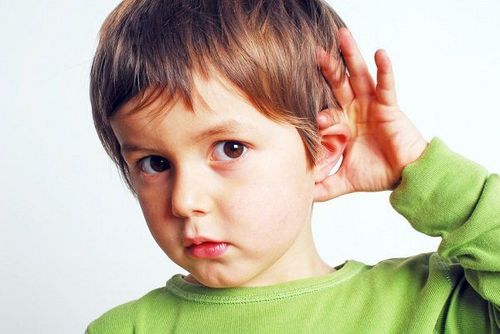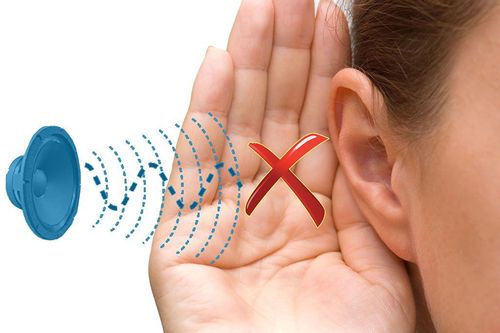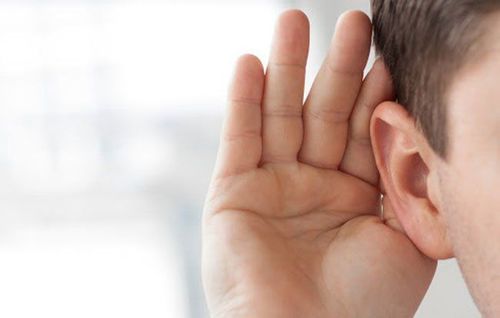This is an automatically translated article.
People develop language by hearing and hearing is the basis for building socio-emotional skills, cognitive skills and later reading comprehension and learning skills.
Today, the progress of science and technology, physics, acoustics, optics... has helped doctors to understand thoroughly about the auditory pathway, helping to test and diagnose diagnose hearing-related diseases effectively.
1. What is hearing?
Normal people's hearing is not exactly the same. The average index when measuring audiometry in young people without ENT disease was selected as the standard for normal people. The audible range of the human ear is in the range of 16 - 20,000 Hz (Hertz), each frequency has a minimum and a maximum hearing threshold. Compared with the hearing of some animals, human hearing is still inferior, for example: bats, mice, cats... will hear 60,000 Hz, some bats can hear 100,000 Hz.
The human voice is located in the most sensitive region of the audible sound field, in the frequency range of 250 - 4,000 Hz, the sensitivity of hearing reaches its maximum in the frequency range of 1000 - 2000 Hz. In terms of intensity, normal speech is in the range of 30 - 70 dB (speak softly: 30 - 35 dB, medium talk 55 dB, speak loudly 70 dB). Therefore, hearing loss in the vocal region of the voice is widely noticed and recognized, but less attention is paid to the loss of hearing in other sound regions. Conventional audiometers only measure hearing in the 125 - 8000 Hz frequency range.
In terms of intensity, a loss of hearing up to 30dB is felt and noticed by the patient. So many people with a loss of about 25 dB or less do not feel any difficulty in life. At some point, the patient has a "cold, flu", hearing loss by 5 dB, suddenly people know that they have a hearing loss. Some people can't hear sounds with a frequency of 8000Hz or more at all, it doesn't have a big impact on life.

Thính giác của người bình thường không hoàn toàn giống nhau
2. What is audiometry?
Audiometry is a graphical presentation illustrating a person's available hearing capacity and the degree of hearing loss in each ear of the person. The audiogram numbers range from 125 to 8000 Hz. During a hearing test, the technician plays a sound with a certain frequency at the same time. The smallest sound that one can hear at each frequency will be marked on that audiogram along with its intensity, this is called the "hearing threshold".
3. Why is it important to have early hearing tests for children?

Kiểm tra thính lực nếu có thể nên thực hiện trước khi trẻ được 6 tháng tuổi
For adults, signs of hearing loss can be quickly detected. However, children are not able to realize that. Children who are found to have hearing loss late (for example, when they are 2 to 3 years old) can suffer from permanent, irreversible hearing disabilities in speech, language development, and speech. language and perception. Most cases of permanent hearing loss are caused by damage or loss of function of the auditory nerve, which cannot carry sound signals from the inner ear to the brain.
Only about half of all cases of hearing loss have an identifiable cause, most of which are acquired during pregnancy and childbirth or from genetic causes. Therefore, hearing testing should, if possible, be done before the baby is 6 months old.
Currently, at Vinmec Hai Phong International General Hospital, there is a service of monophonic audiometry and tympanometry. This is an objective method that can be used for uncooperative cases, especially for young children. Steps to perform a hearing test with a new, good device: KARNSTORCH (imported from Germany).
Check the device Ear examination, if there is earwax, give it away. Choose the right earplug. Instruct the patient to sit still when measuring, do not raise hands, do not talk. Turn on the device, put the probe in the ear canal, when the green light indicates that the probe is in the correct position, proceed to measure according to the settings of the device. Measure each ear individually for the most accurate results.
Please dial HOTLINE for more information or register for an appointment HERE. Download MyVinmec app to make appointments faster and to manage your bookings easily.













